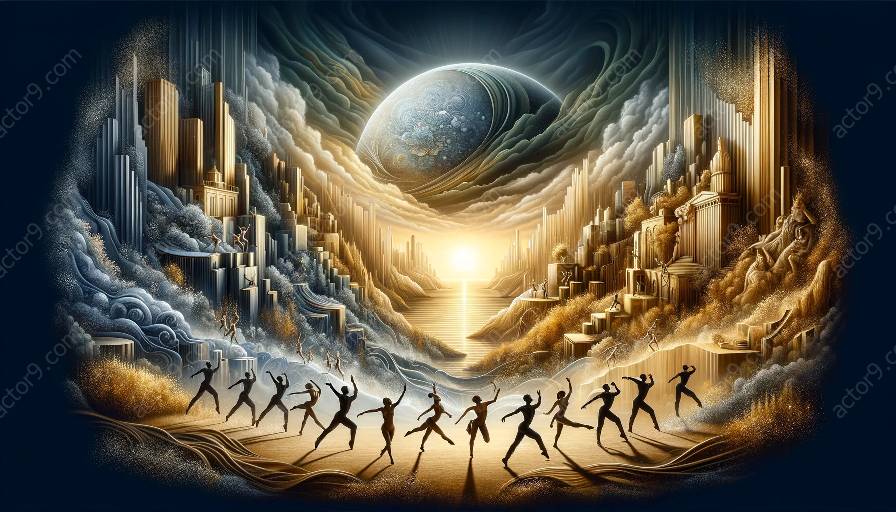Physical theatre and LGBTQ+ advocacy are two powerful forces that intersect in a compelling and transformative way, shedding light on social issues and promoting inclusivity and diversity. This topic cluster dives into the significance of this intersection, exploring how physical theatre serves as a platform for portraying social issues and advancing LGBTQ+ rights.
The Role of Physical Theatre in Portraying Social Issues
Physical theatre, as an art form that emphasizes movement, gesture, and expression, possesses a unique ability to convey complex social issues in a visceral and impactful manner. Through the use of the body as the primary storytelling tool, physical theatre transcends linguistic barriers and delves into universal themes, making it an ideal medium for portraying the struggles and triumphs of the LGBTQ+ community.
Embodying the LGBTQ+ Experience
Physical theatre allows performers to embody the LGBTQ+ experience through evocative movement and physicality, giving voice to the diverse narratives within the community. Whether it's representing the joy of self-discovery, the pain of discrimination, or the resilience of love, physical theatre brings these experiences to life in a raw and unfiltered way, fostering empathy and understanding.
Challenging Norms and Prejudices
By pushing the boundaries of traditional narrative techniques, physical theatre disrupts societal norms and challenges prejudices against the LGBTQ+ community. Through inventive choreography and non-verbal storytelling, physical theatre confronts audiences with the reality of discrimination and the urgency for societal change, igniting dialogue and reflection.
LGBTQ+ Advocacy Through Physical Theatre
Physical theatre serves as a powerful platform for LGBTQ+ advocacy, amplifying the voices of the community and advocating for greater visibility and acceptance. It becomes a catalyst for social change and empowerment, shaping narratives that celebrate queer identities and dismantle stereotypes.
Creating Inclusive Narratives
Through performances that center LGBTQ+ experiences, physical theatre creates inclusive narratives that resonate with audiences from all walks of life. By showcasing the richness and diversity of queer stories, physical theatre establishes a space where individuals feel seen, understood, and valued, fostering a sense of belonging and empathy.
Engendering Empathy and Connection
Physical theatre cultivates empathy and connection by inviting audiences to witness the humanity within LGBTQ+ stories. Through intimate and captivating performances, it dismantles barriers and prejudices, fostering a deeper understanding of the LGBTQ+ experience and fostering solidarity and support.
The Impact and Relevance of this Intersection
The intersection of physical theatre and LGBTQ+ advocacy holds immense significance in today's society, resonating with audiences and sparking crucial conversations about equality and representation. It stands as a testament to the power of art in driving social change and advocating for a more inclusive and equitable world.
Celebrating Diversity and Individuality
Physical theatre celebrates the diversity and individuality within the LGBTQ+ community, embracing the myriad of identities and experiences that contribute to the rich tapestry of human existence. Through compelling performances, it uplifts and honors the multifaceted nature of queer existence, promoting a culture of acceptance and celebration.
Fostering Dialogue and Activism
By engaging audiences in thought-provoking and emotionally resonant experiences, physical theatre becomes a catalyst for dialogue and activism, inspiring individuals to advocate for LGBTQ+ rights and contribute to creating a more inclusive society. It encourages audiences to reflect on their own beliefs and biases, prompting tangible action and support.
Empowering LGBTQ+ Artists and Allies
The intersection of physical theatre and LGBTQ+ advocacy empowers LGBTQ+ artists and allies to use their creativity as a tool for social change, offering a platform for expression and resistance. It provides a space where voices that have been marginalized can flourish, amplifying their impact and paving the way for a future where authentic representation and acceptance are the norm.




































